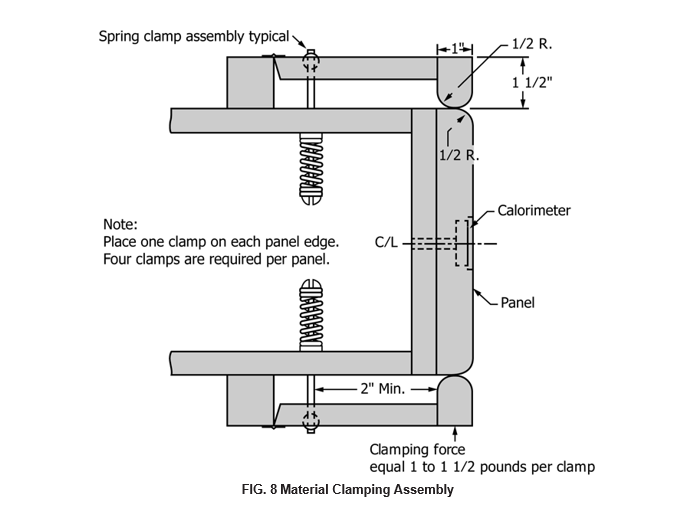- Ablation, n-in arc flash testing, a physical response evidenced by significant erosion or the formation of one or more large holes in one layer of a multilayer system.
- Eab: The incident energy in a multilayer system that results in a 50% probability of the ablation physical response.
- Arc rating is expressed in cal/cm2 and is derived from a determined ATPV or EBT value (if a material system exhibits a breakdown response below the ATPV value) derived from a determined ATPV or EBT value (should a system material shows a rupture response below the ATPV value).
- ATPV: The incident energy on a material or a multilayer system of materials that results in a 50% probability that sufficient heat transfer is anticipated through the test sample to cause the occurrence of a second degree skin burn injury. according to the Stoll5 curve, kW/m2 [cal/cm2].
- The specimen is considered to exhibit rupture when any hole is at least 0.5 in.2 [1.6 cm2] in area or at least 1.0 in. [2.5 cm] in any dimension. In multi-layered specimens of fire-resistant material, all layers must break to meet the definition.
- EBT – The incident energy on a material or material system that results in a 50% probability of opening, J/cm2 (cal/cm2).
- Heat Attenuation Factor, HAF: In arc flash testing, the percentage of incident energy that is blocked by a material at an incident energy level equal to ATPV.
- Heat flux, n: The thermal intensity indicated by the amount of energy transmitted divided by the area and the time kW/m2 [cal ⁄cm2s].
- Incident energy (Ei), n—the total thermal energy received at the panel surface as a direct result of an electrical arc.
- Stoll Curve 5: An Empirical Model of Predicted Second Degree Skin Burn Injury, Also Commonly Known as the Stoll Response.
This test method determines the heat transport response through a material, fabric, or tissue system when exposed to the thermal energy of an electrical arc. This heat transport response is assessed against the Stoll curve, an approximate human tissue tolerance predictive model that projects the occurrence of a second degree burn injury.
During this procedure, the amount of thermal energy transferred by the tested material is measured during and after exposure to an electric arc.
Material performance for this procedure is determined from the amount of heat transferred by and through the tested material.
The heat transfer data determined by this test method is the basis of the arc classification for the material.
The arc rating determined by this test method is the amount of energy that predicts a 50% chance of a second degree burn as determined by the Stoll Curve or rupture (if the sample shows rupture before the arc prediction is reached). skin burn injury).
The response of the material should be described in more detail by recording the observed effects of arc flash exposure on the specimens.



